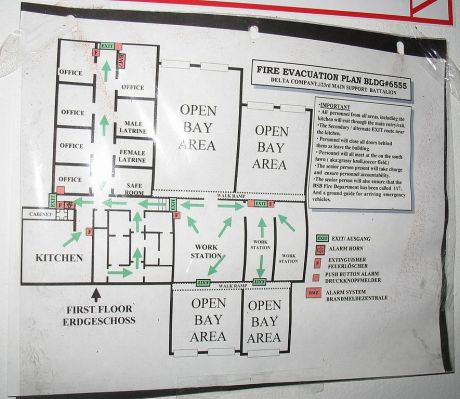
Fire Evacuation
By Fernost (Self-photographed) [GFDL (http://www.gnu.org/copyleft/fdl.html), CC BY-SA 3.0 (http://creativecommons.org/licenses/by-sa/3.0) or Public domain], via Wikimedia Commons
An EU group is developing a system to manage crisis evacuations of public spaces. Having created a network of sensors and crowd behaviour algorithms, further development and testing will yield decision-making tools that relay the best exit paths.
An emergency requiring rapid evacuation of crowds could lead to panic
and confusion, potentially leading to loss of life. An effective
alternative may be a system that uses sensors and communications
technologies to relay contextual information, including safe escape
routes.
The EU-funded
EVACUATE (A holistic, scenario-independent, situation-awareness and guidance system for sustaining the active evacuation route for large crowds) project aims to develop such a system. Other goals include creation of crowd dynamic models and a decision-support system. The latter is intended to distribute key information to emergency managers during a crisis. The 19-member consortium runs over 4 years to March 2017.
Work began with analysis of the technical state of the art, leading to recommendations for the project system. The team assessed user needs via interviews and questionnaires, then documented the results. Evaluation yielded four realistic usage scenarios.
Subsequently, the group defined the system architecture. The resulting design included hardware and software components, incorporating 2D and 3D interfaces.
Researchers studied crowd psychology and yielded a classification model incorporating behaviour recognition. A system module was designed with the ability to detect relevant crowd movements.
Project members commenced development of an evacuation strategy, which considers physical constraints and crowd movements. Such work included identification of best practice guidelines. Various other subsystems were similarly defined, as was a legal framework.
EVACUATE will yield a system that monitors crowd evacuation situations. The system utilises information from the location to determine the best course of action, relaying the recommendations to managers, thereby achieving the safest possible exit.

